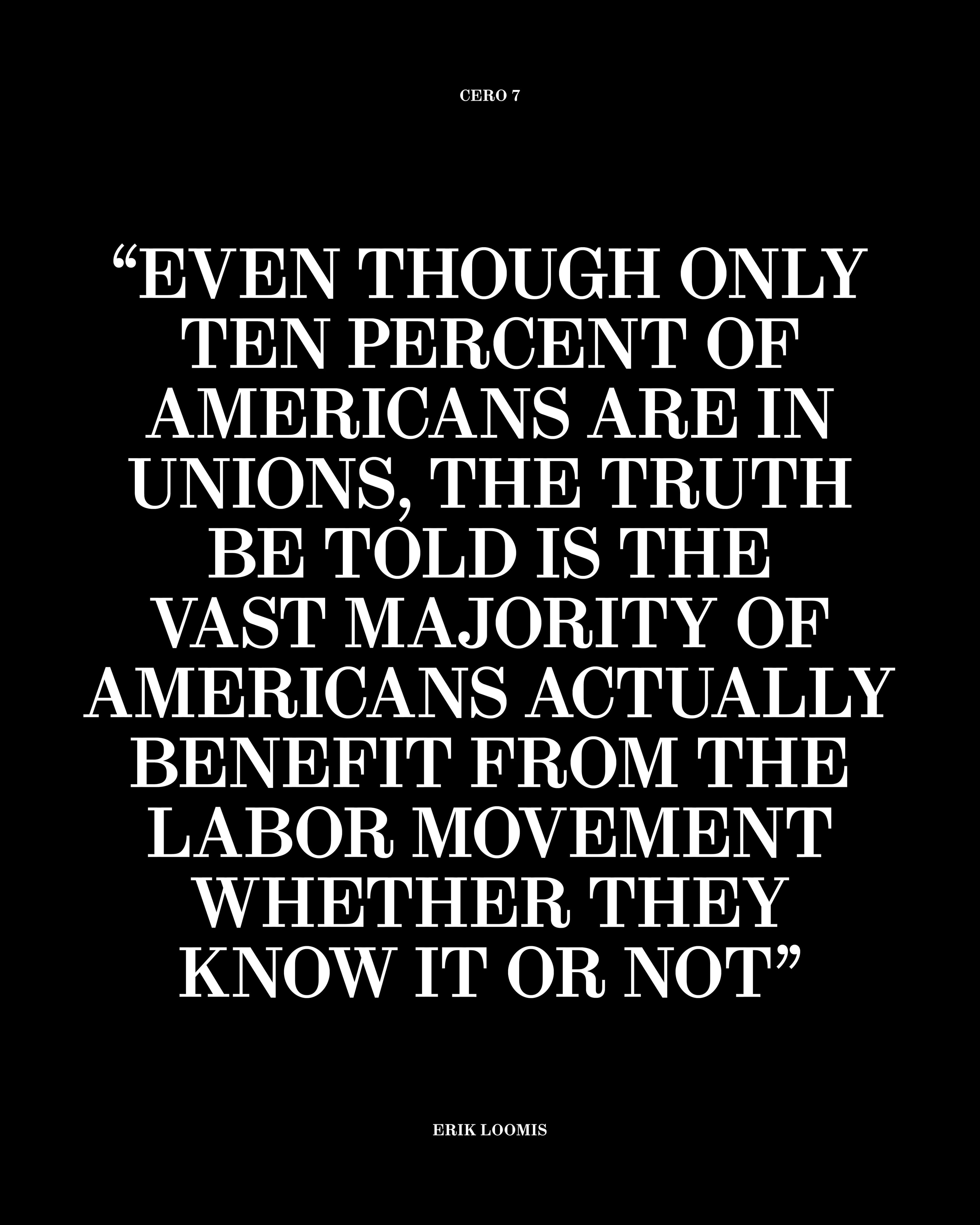
The Year of Labor
Over the course of 2023, strikes and labor movements commanded the spotlight of media attention in America in a way not seen in decades, and it’s not hard to understand why. With income inequality at some of the highest levels in a century, an increase in the cost of living, and stagnant wages, workers across the country showed up in force on picket lines across a multitude of industries, demand ing better conditions and often issuing work stoppages to do so. Massive unions like the Teamsters at UPS, the United Auto Workers of America, and several nurses’ unions all came together to either threaten or carry out strike action in retaliation against unfair labor practices. Elsewhere, the Screen Actors Guild- American Federation of Television and Radio Artists (SAG-AFTRA) and the Writers Guild of America shut down Hollywood for a combined six months of strikes, and workers at companies like Amazon and Starbucks continue their efforts to unionize, even as they experience severe pushback from the corporate levels.
The demands from striking workers often have similar threads and are far from unrea- sonable — according to the Cornell-ILR Labor Action Tracker, the most common asks are for better pay to keep up with the cost of living (and, in the case of the United Auto Workers strike, CEO pay increases), health care, and health and safety standards. Notably, it isn’t just union workers taking to the picket lines. “In 2021 and 2022, about one-third of all strikes were organized by non-union workers,” says Johnnie Kallas, lead researcher of the ILR Labor Action Tracker. “While those strikes tend to be a lot smaller, it was somewhat surprising because we all usually associate striking with being in a union because unions have organizational support like strike funds and they naturally bring workers together. It’s quite significant that we also see strikes organized by non-union workers who are looking to estab- lish more of a voice in their workplace.”
Unions first began appearing in America in the 1800s, although early efforts to orga- nize were often small and underpowered. Interest and their popularity continued to grow through the early 1900s as workers found themselves stuck between two terrible options: risk death at work in terribly unsafe conditions or death on the picket lines, as strikes often turned to violence. However, workers’ efforts did produce results as bills were passed that solidified the eight-hour workday and protections against child labor, culminating in the passage of the Wagner Act in 1935, which guaranteed workers’ right to organize.
But by the eighties, union membership was in decline — the Reagan administration actively pushed against the positive rhetoric put forth by unions, reaching a boiling point when Reagan fired eleven thousand striking air traffic control workers in 1981, which galvanized and empowered other business owners to take control. Since then, union participation has been in steady decline, with membership falling from around twenty percent of the work- force in 1983 to just over ten percent in 2022. Although the past year has seen a rise in labor actions, they are still at historic lows compared to before the eighties. “The reality is that while strikes have increased relatively over the last few years, especially since the 2018-2019 teacher strikes in West Virginia, Oklahoma, Arizona, and other states, the level of activity is still well below what we saw in the mid to late twentieth century,” says Kallas. “This is a really important moment and a potentially transformative moment for the labor movement.”
According to a Gallup poll, unions are experiencing a popularity not seen in decades, with a sixty-seven percent approval rate in the latest round of polling released in August 2023, down just slightly from seventy-one percent in 2022. “There’s been academic scholarly research that demonstrates that up to fifty percent of non-union workers would vote for a union if they could,” says Kallas. “Yet the unionization rate is only about ten percent. So, what really explains that huge gap? To me, the role of employer opposition and weak labor law goes a long way to explaining that.”
The lax state of current legislation means that companies are rarely punished for committing transgressions. Amazon has fired workers like Chris Smalls for encouraging unionization, while Starbucks has openly violated labor laws when attempting to discourage their organizing workers in what Senator Bernie Sanders at a Senate hearing this past March called “the most aggressive and illegal union-busting campaign in the modern history of our country.”
Without incurring penalties, there are incentives for American companies to invest in fighting unions rather than negotiating with them. According to a report published by the Economic Policy Institute last year, employers spend around four hundred million dollars annually on consultants to advise on union-avoidance and union-busting campaigns. Companies are also able to influence policy through financial pressure. “It’s almost impossible to actually form a new union today because corporations so control the legal structure by which unions are formed,” says Erik Loomis, professor and director of graduate studies at Rhode Island University.
“If you look back to social movements that have happened throughout US history, it’s largely because people on the ground are organizing and coming together to cause that disruption,” says Kallas. “But then you do need change from the top and for politicians to cen- ter the interests of workers and policy change.” Some of these fixes can be simple and effective. “In some provinces in Canada, they have what’s called mandatory first contract arbitration, where if the union and employer can’t come to an agreement, then an arbitrator will come and impose one,” says Kallas. “That doesn’t exist in the United States, so if the employer is really deep-seated against the idea of unionization and there aren’t really effective penalties to penalize that, then it’s really hard to bring them to the table and negotiate a contract.”
The recent labor movements have shown that some of the major strikes do seem to be working. In California, fast food workers have pushed forward a bill to raise their minimum wage from $15.60 to $20 in the first of many steps to improve working conditions, and at UPS, the threat of walking off the job earned its union members a labor deal worth thirty billion dollars in increased wages and benefits. After months of heated back-and-forth, the Writers Guild Association negotiated a contract with historic gains in protections against AI replacing human jobs. The United Auto Workers mobilized strikes against the three leading automakers of America in efforts to earn a living wage and protect their jobs from moving to non-union factories in less union-friendly southern states. There is also incredible momentum from pro-union Americans in pushing to pass the Protecting the Right to Organize (PRO) Act, which would protect workers’ rights and update outdated laws that currently make it incredibly difficult to establish new unions.
When unions exist in an area, all workers can reap the benefits. “Even though only ten percent of Americans are in unions, the truth be told is the vast majority of Americans actually benefit from the labor movement whether they know it or not,” says Loomis. “If it’s an industry with a relatively sizable union presence, it’s the union that’s setting your wage rate. Companies will match that wage rate and those benefits to keep the unions out.” Southern states are a prime example of this, as they boast some of the lowest union membership rates and the lowest wages in the country to match.
While it can be difficult to quantify exactly how successful a strike can be given the subjective nature of what it means to ‘win’ a negotiation, it’s clear that with workers united, progress can prove to be astounding. Large-scale movements can lead to changes from the top down in both government and industry with the power of collective bargaining that lies in the hands of every worker in America. “The challenges of this economy are not ones that can be solved individually,” says Steve McFarland, associate professor and chair of labor studies at California State University. “It’s really a matter of workers coming together, demanding that they get their fair share of the great amount of wealth that’s being produced in society.”
Read this story and many more in print by ordering our seventh issue here.
As a nonprofit arts and culture publication dedicated to educating, inspiring, and uplifting creatives, Cero Magazine depends on your donations to create stories like these. Please support our work here.






